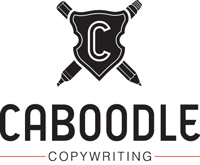Psychology is integral to marketing. All advertising briefs (well, the best ones) revolve around the audience. Their drivers. Their motivators. Their world view. Not so much with websites, though. Companies often plan and write websites based on what they want to say – what they want visitors to read and do. But applying a little psychology can make all the difference.
No degree, couch or wire-rimmed specs required
You don’t have to be Carl Jung to bake some common-sense psychology into your website, so that it works for as many people – or personality types – as possible.
After all, the more people that find your website experience satisfying, the more likely they are to click that contact button, or fill in that form, or add that product to their basket.
However, it can help to think about the Myers-Briggs Type Indicator (based on Jung’s theories) when you're planning your website's IA and content.
What is the Myers-Briggs Type Indicator (MBTI)?
The MBTI is a questionnaire that has long been used to assess or identify different personality types – there are 16 personality types in total.
You’ll find lots of different versions of the test around and it’s good fun to find out what personality type you are. This one gives you a really good rundown of each type. I’m an INFJ.
Anyhow, the idea is that once you have a better understanding of your psychological preferences (your strengths, weaknesses etc), you’re in a better position to move forward – in work, in life.
What you can learn and apply to your website
There are lots of things you can learn from the test and apply to your marketing and website – far too much to cover here.
However, here’s one very basic takeaway: while there are 16 personality types, you can distil them – in very broad terms, for ease of application – to two types of web user.
- Type #1: The foot tapper. These people want answers. Yesterday. They don’t want to wade through detail. They want to make a decision and they want you to help them make it, ASAP.
- Type #2: The grazer. These people want information. Lots of it. They don’t do snap decisions, so there’s no such thing as too much information. They want the ins and outs, and they want to shake it all about before they commit.
Obviously, I’m generalising and over simplifying. But if you think about planning your website and content with these two types in mind, you’ll go a long way to avoiding frustration – and as any savvy UX expert will tell you, frustration is one of the key barriers to conversion.
Find out how to apply this thinking to your website’s IA and content. Get in touch with our copywriters (and tell us your personality type) – we’re always happy to talk website planning and copywriting.
Paul Leonard is an award-winning copywriter and creative director. He has plied his creative craft in the UK and Australia for more years than he cares to mention, working with clients of all shapes and sizes across an equally diverse range of industries. When he’s not building brands and crafting copy, concepts and campaigns, he enjoys running, drinking iced coffee and writing profiles about himself in the third person. Paul is an INFJ.
